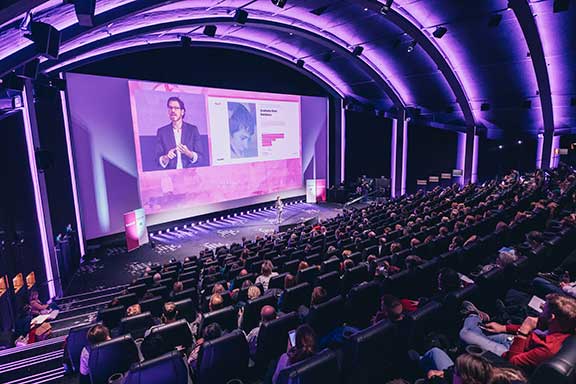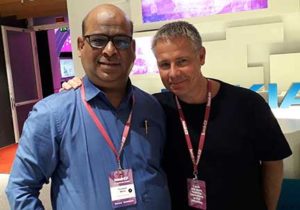Prashant Muley
“Welcome to Hel”, was the heading on the hoarding as I landed at Helsinki airport in early November last year. I was in Helsinki to participate in the Helsinki Education Week and Global HundrED Innovation Summit on school education.
It was the first annual Helsinki Education Week. In conjunction with HundrED, an organization that shares inspiring innovations in K12 education, there were several events lined up. These ranged from school visits to panel discussions, to interactive workshops. Finland understands that the quality of its educational system makes it a perfect hub to bring the global community together so that all actors can add value to their respective educational contexts.
The Masterclass session hosted by HundrED, consisted of ample networking opportunities and an array of 30-minute presentations led by several innovators. Some examples –
- The Teacher’s Guild: Stemming from San Fransisco’s famous design company, IDEO, The Teacher’s Guild uses methods and mindsets from the Design Thinking for Educators Toolkit to catalyze creative leadership. Its learner-centered approach builds teachers’ skills and confidence to design for the evolving needs of their students and schools.
- Community Share: This Arizona-based digital platform matches local expertise and knowledge with the needs and goals of students and teachers. This is an incredibly important innovation as the disconnect underpinning the US education system is one of its greatest failures. Furthermore, allowing students to engage with community partners creates real-world learning opportunities.
- Dream a Dream Life Skills Assessment: Research has shown that life skills like empathy, self-awareness, and emotional management are becoming increasingly important, but there tends to be uncertainty about how to assess them. Dream a Dream’s evidence-based scale fills this niche which is not only incredibly important for assessing individual development, but also programmatic in it’s approach.
- Talking Tree Hill: Children at this unique school in New Zealand spend at least one day a week becoming “Outdoor Awesomepreneurs”. Education is based around sustainability and well-being that enables students to reconnect with nature and themselves. They even performed their traditional songs and dances at the venue, and it was an absolute riot!

As part of Education Week, I got an opportunity to visit Hiidenkavi Comprehensive School in Helsinki, where I spent about four hours. It was mainly a Finnish-medium government school with students up to grade 9. It was very well funded by their government and I felt that it would beat even reputable private schools in India, especially with regard to infrastructure and resources. The emphasis of the school was on phenomenon-based learning (these interdisciplinary learning enquiries are mandated in the new Finnish curriculum), which is basically cross-curricular learning. Finnish educators owe the success of their education system to the autonomy to teachers and school, cross-curricular teaching methodology, freedom in implementing new ideas, strong teacher training-professional development programs, etc. The Finnish education system came into the limelight after their success in PISA (Programme for International Student Achievement), where Finnish students and Finland as a country was ranked in the top 5 positions consecutively for a few years.
- Think Global School: A travelling high school based in New York, USA, where students live and learn in four countries a year. Combining its learner-and project-centred activities with travel, this school allows students to make strong connections between their education and the world around them. They have such wonderful experiences to share that I could listen to one of their presenters, Jamie Steckart, all night long.
- Trix and Trax: This Venezuelan organization helps students discover and develop talent in the arts, music, dance, and sports through peer learning – from zero-to-hero. These performances are then shared in a controlled social media platform to be recognized amongst their peers.
- HD Lee – is a young professor of psychology who is preparing to start an organization to help the youth find meaning, purpose, and love for life.
The HundrED Summit was held at Nokia’s Executive Experience Center. The day was kicked off by the famous Pasi Sahlberg (Finnish educator, author and scholar), who schooled us on an educational history lesson. His point was that many of the learning innovations are not new ideas, people just didn’t listen when they were presented to them before. The primary goal was to move away from the why and what of education and get to the how. Moving from local silos to global collaboration and putting student voice at the centre of the change were my broad takeaways from this session.
In the words of the mayor of Helsinki, “Finland’s goal is not to create the best, best schools, it is to create the best, worst schools.” Put another way, families can rest assured that no matter where they live, their child will receive an excellent education.
On the final day of the HundrED Summit, three events stood out in particular. The first was facilitated by a panel of teachers discussing ways to promote well-being in the classroom. One provided actionable ways to turn routinized tasks into creative ones, another talked about finding the right support group, and a third guided us through mindfulness activities.
 Another discussion was led by the CEO of Supercell, a Finnish company which has built some of the world’s most popular digital games. He noted that the shift towards success only happened when he decided to flip their organizational structure so that he would become the world’s least powerful CEO. He thus allocated major creative and decision-making power to small “cells”. Despite the difference in industry, there were clear parallels to education. It is imperative to shift our school cultures so that students are put at the forefront of their learning.
Another discussion was led by the CEO of Supercell, a Finnish company which has built some of the world’s most popular digital games. He noted that the shift towards success only happened when he decided to flip their organizational structure so that he would become the world’s least powerful CEO. He thus allocated major creative and decision-making power to small “cells”. Despite the difference in industry, there were clear parallels to education. It is imperative to shift our school cultures so that students are put at the forefront of their learning.
The third aspect I truly enjoyed was an inquiry posed by Saku Tuominen, the founder of HundrED. In a panel consisting of major players providing funding to educational leaders, he asked, “If you had $100 million to make a major change in education, how would you spend it?” Given the few seconds to formulate a response, the panellists understandably failed to provide specific answers, but it is a question that everybody should be thinking about.
In schools in Finland, they follow scientifically established facts. For example – take a break after every 45 minutes of concentrated work, schools begin only after 8 or 8.30 am in the morning and so on.
The summit was not only about the content or innovations or inspiration, it also was an opportunity to connect and network in the beautiful city of Helsinki.
The author is Principal, Podar International School, Aurangabad. He can be reached at
principalicse.auragabad@podar.org, muleyprashant@hotmail.com.
